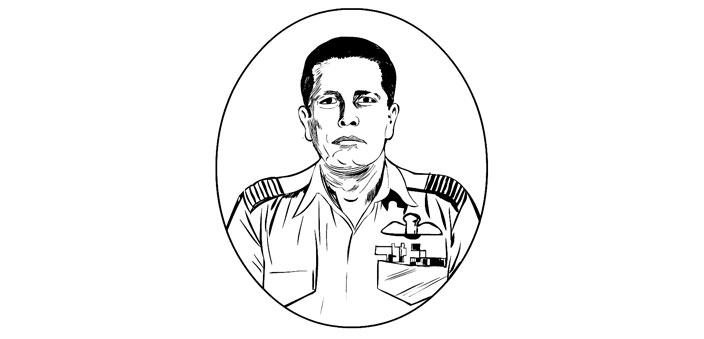Brilliant and brave officer (1927-2015)
Pete Maynard Wilson was born on 29 November 1927, and underwent training in the then Royal Indian Air Force (RIAF) training establishment at Jodhpur. He was the outstanding cadet of the batch, and was awarded trophies in flying as well as in ground subjects. The trophies were presented by the Maharaja of Jodhpur. He then went to the Advanced Flying School, RIAF, Ambala. He was awarded the Sword of Honour and prizes for gunnery and other subjects. He was commissioned into the Indian Air Force (IAF) on 1 July 1949. In 1962, Squadron Leader Wilson was posted to No. 5 Squadron in Leopoldville (now Kinshasa), the capital of Congo. The previous contingent had provided effective support to UN (United Nations) operations, faced hostile fire, and had earned well deserved awards.
He took over command of No. 16 Squadron at Kalaikonda in January 1964. At the outbreak of war, part of the squadron was moved to Gorakhpur, which is beyond the range of Pakistan Air Force (PAF). On 7 September 1965, Wilson led two Canberras in a raid on Chittagong airfield. They approached the target from the sea in order to avoid possible interception by PAF. Wilson dropped the bombs after making three runs, but the bombs did not explode. The second aircraft made a run and dropped the bombs, which did explode. The strike was a disappointment and Wilson called it a ‘fiasco”. PAF carried out two retaliatory attacks at Kalaikonda, and four Canberras were destroyed on ground.
The next mission of No. 16 Squadron was led by Wilson from Bareilly to bomb Sargodha. He arrived at the target at a height of 500 feet and could not spot the runways till the anti-aircraft guns opened up. He dropped the target indication bombs and the accompanying four planes dropped the bombs. The last mission of the war was to destroy Pakistan’s radar unit at Badin in Kutch area. The radar station was heavily defended by anti-aircraft (AA) weapons. The target required accurate bombing. In spite of radar cover and heavy anti-aircraft defences, Wilson led six planes in daylight, flying at a low level. The raid was a tactical surprise for the PAF who were not expecting it. The radar unit went out of action as the radar tower had been knocked down. Wilson acted with courage and determination in the best traditions of the IAF, and was awarded Vr C.
In 1966, on Wilsons’ departure from No. 16 Squadron, many of the squadron personnel came to the railway station to see the family off. They left the station before the departure of the train, making some excuses. Wilson and the family were smarting at this discourtesy, when six Canberras screamed at a low level to pay an unforgettable tribute to a highly-regarded commanding officer. On promotion to the rank of Group Captain, he commanded the Armament Training Wing at Jamnagar from April 1968 to February 1972. At the start of the war, he had the AA guns to aim above the intersection of runways. He gave instructions to hold fire unless sure of having been compromised. This direction was based on his experience of attack on Sargodha in the 1965 war. Jam Saheb of Jamnagar was keen to play a role and Wilson gave him charge of one gun and its crew. Jam Saheb brought food and drinks for the crew every day, who prayed for the war to last for five years! The plane of Wing Commander Mervyn Middle coat of PAF was shot down during the attack on Jamnagar. Years later, Wilson chanced to meet a Pakistani in a supermarket in London. He mentioned to Wilson that Mervyn’s family had not been given a clear information of the death of Mervyn. Wilson gave him the details of the accident and these were passed on to the family in Australia. Wilson received thanks through the same channel. He was awarded the PVSM after the 1971 war. He passed away in UK on 28 December 2015.

